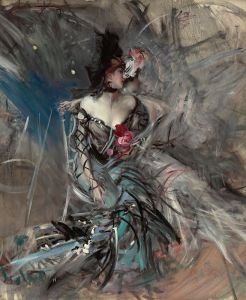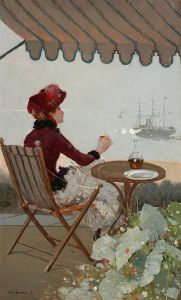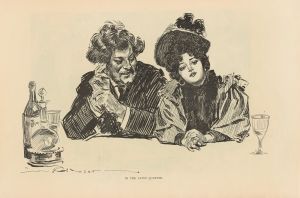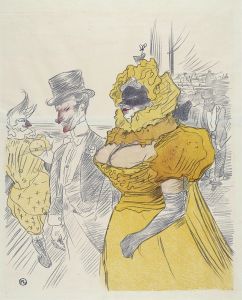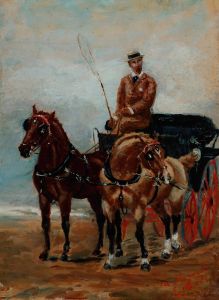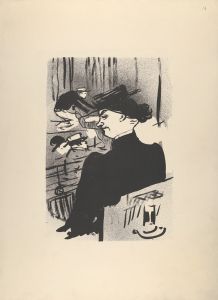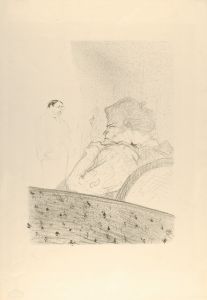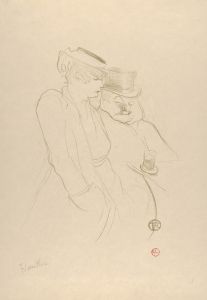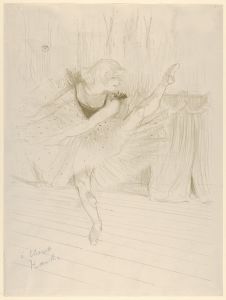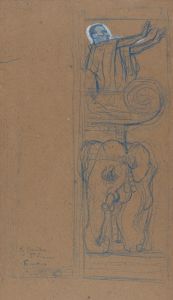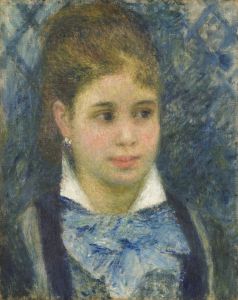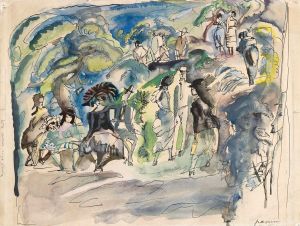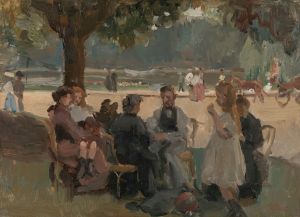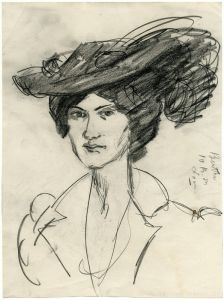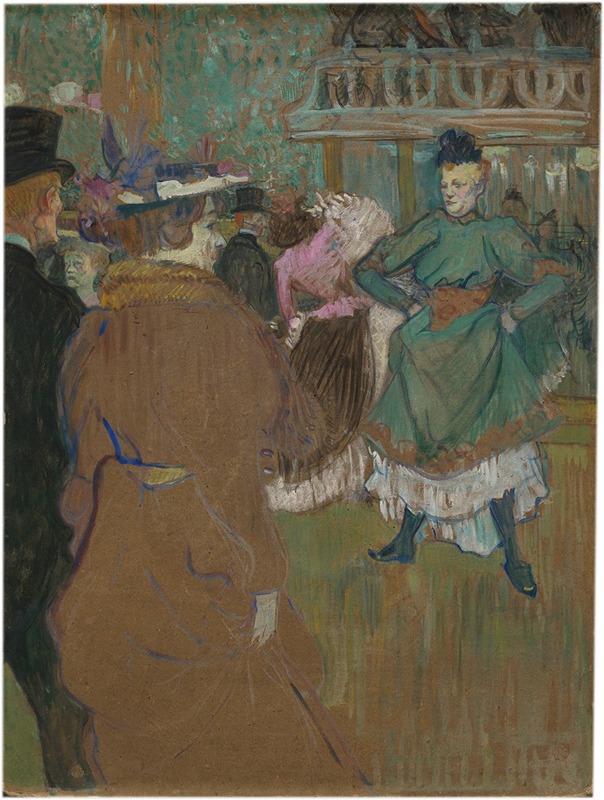
Quadrille at the Moulin Rouge
A hand-painted replica of Henri de Toulouse-Lautrec’s masterpiece Quadrille at the Moulin Rouge, meticulously crafted by professional artists to capture the true essence of the original. Each piece is created with museum-quality canvas and rare mineral pigments, carefully painted by experienced artists with delicate brushstrokes and rich, layered colors to perfectly recreate the texture of the original artwork. Unlike machine-printed reproductions, this hand-painted version brings the painting to life, infused with the artist’s emotions and skill in every stroke. Whether for personal collection or home decoration, it instantly elevates the artistic atmosphere of any space.
Henri de Toulouse-Lautrec, a prominent French painter and illustrator, is renowned for his vivid portrayals of Parisian nightlife in the late 19th century. One of his notable works, "Quadrille at the Moulin Rouge," captures the vibrant and dynamic atmosphere of the famous cabaret, the Moulin Rouge, located in the Montmartre district of Paris. This painting is a testament to Lautrec's unique style and his ability to encapsulate the essence of the bohemian lifestyle that characterized the era.
"Quadrille at the Moulin Rouge" is a depiction of the lively and energetic dance known as the quadrille, a popular form of entertainment at the Moulin Rouge. The cabaret, which opened in 1889, quickly became a symbol of the exuberant and often decadent nightlife of Paris. It was a place where artists, writers, and performers gathered, and it played a significant role in the cultural landscape of the time.
Toulouse-Lautrec's painting reflects his keen observation and his ability to capture movement and emotion. The composition is filled with dynamic figures, each engaged in the spirited dance. The dancers are depicted in mid-motion, their skirts swirling and their expressions animated, conveying the excitement and energy of the performance. Lautrec's use of bold colors and strong lines enhances the sense of movement and vitality, drawing the viewer into the scene.
The artist's connection to the Moulin Rouge was not merely that of an observer; he was a regular patron and a part of the social circle that frequented the venue. This close relationship allowed him to portray the cabaret and its performers with an authenticity and intimacy that is evident in his work. Lautrec's paintings and posters of the Moulin Rouge and its dancers, such as La Goulue and Jane Avril, contributed significantly to the venue's iconic status.
Toulouse-Lautrec's style is characterized by his innovative use of color and form, influenced by both Impressionism and the Japanese art of ukiyo-e. His work often features exaggerated figures and a flattened perspective, which were groundbreaking at the time and have since been recognized as precursors to modern art movements. In "Quadrille at the Moulin Rouge," these elements are evident in the way he captures the essence of the dance and the atmosphere of the cabaret.
The painting is not only a representation of a specific moment in time but also a reflection of the broader cultural and social dynamics of Paris during the Belle Époque. It illustrates the blend of high and low culture, the mingling of different social classes, and the spirit of innovation and creativity that defined the period. Toulouse-Lautrec's work provides valuable insight into the world of entertainment and the role of the artist in documenting and shaping cultural history.
"Quadrille at the Moulin Rouge" remains an important piece in Toulouse-Lautrec's oeuvre, showcasing his mastery of capturing the human form and the vibrancy of life. It continues to be celebrated for its artistic merit and its contribution to the understanding of a pivotal era in the history of art and society. Through his work, Toulouse-Lautrec not only documented the world around him but also influenced the direction of modern art, leaving a lasting legacy that continues to inspire artists and art enthusiasts alike.





